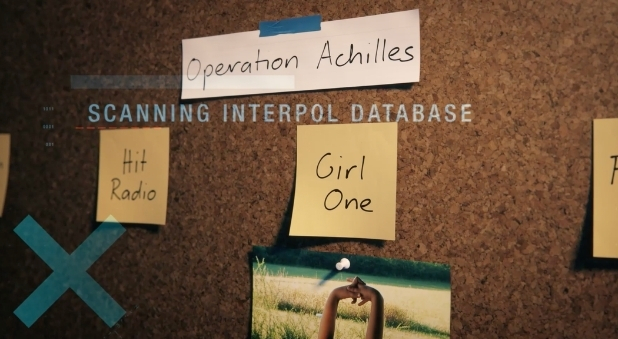The Children in the Pictures
Rated M – frequent references to child abuse; coarse language
SBS, October 24 at 8.30pm; SBS Viceland, October 27 at 10.15pm
There are some things you wish you didn’t have to know about. It’d be much nicer to go through life without any inkling of the extent of human depravity.
Sadly, in order to protect ourselves and others, it’s sometimes necessary to hear, see and talk about more than is comfortable. Forewarned is forearmed – and some elements of this documentary are definitely hard to stomach.
The Children in the Pictures shows the work of Task Force Argos, a Queensland-based police investigative team linked with similar units across the globe that rescue children from online sexual abuse. Because if there’s one thing the internet has taught us, it’s that a national boundary poses no barrier to the sharing of photos and files. And as the head of the Argos team, Detective Inspector Joe Rouse says, “We’ll help, wherever the kids are”.
Rouse is kind-faced, gently spoken, and – to look at – about as far removed from the hard-nosed crime-fighting cliché as you can imagine. But he has been battling child sexual exploitation since the 1990s with a deep, ongoing commitment to rescuing children from abuse, and uncovering and dismantling the networks that encourage and propagate it.
One of the first things he notes in the documentary is that most people simply don’t understand the magnitude of this problem. They agree that it’s “terrible” but go no further. I admit to being one of these people as, in the past, simply thinking about such issues made me queasy.
However, this is the work freely undertaken by the members of Task Force Argos (the group’s motto is “Leave no stone unturned”) because without their efforts, the children in sexual bondage to relatives, friends or strangers can’t be found, let alone saved.
Of course, some children and teens make material in their own bedrooms and upload it freely – parents beware! – and abusers use this to “sextort” them into providing more.
Some Argos members work in victim identification and are required to watch countless hours of appalling offences against children. And babies. Others take on the even harder role, if that were possible, of assuming the online identity of an offender who has been caught so they can infiltrate the network, identify perpetrators and rescue their victims. Or as one team member puts it, “becoming the enemy”. They do this on the aptly named dark web, where abuse sites are hidden from general view by a special browser and encrypted software.
This latter work is controversial, as it involves the distribution of abuse material so the infiltrator will be accepted as a bona fide member of the group. Victim ID specialist Adele Desirs, who joined Argos a few years ago from Interpol, verbalises what some may well be thinking after reading that sentence: is this morally right? Her answer is that the infiltration, which gains access to abuse files and helps identify abuser and victim, is “the only way... We are trying to fight for them [the children], so any weapon that is available, I’m going to use it”.
We’re shown the meticulous detective work and results of a number of international operations, with scenes of abuse thankfully sanitised and pictures blurred. However, you’re still told more than enough to make your stomach churn.
Over time, despite all the work Argos and others have done, there has been an exponential growth in both the availability of abuse material and websites on which to distribute it. There are thousands of members on one site, tens of thousands on the next... and up and up, until it’s over a million.
What is worse, technology now makes it possible for abusers to be remote from the children they are abusing. Team members note, with some frustration, that companies providing the technology “aren’t taking any responsibility” for what happens on their platforms.
Whatever your feelings about some of the methods used by Task Force Argos and other teams, The Children in the Pictures is a valuable weapon in the fight against child exploitation. It carries the truth about the breadth of this abuse, and the misery it inflicts, out of the shadows and places it squarely in any home, anywhere. And while parts of it are painful to watch, it can inform and equip us so we can protect our own children, and any others with whom we might come in contact.
For upcoming cinema screenings and information, see https://childreninthepictures.org

















